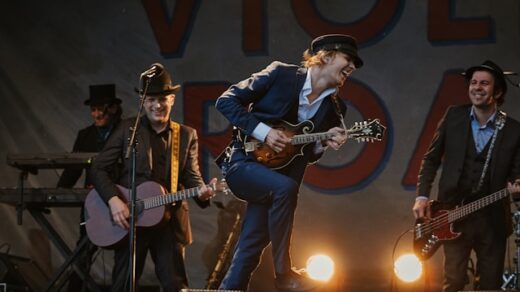Country music is a musical style that was born out of the influence of other musical styles. Its birth must be sought in the United States. In the early 1930s, it began to spread to other English-speaking countries such as Australia, Canada, and New Zealand.
In all of these countries, country music quickly caught on because it has similar folk elements.
The exact moment when all these types of Anglo-Celtic ballads begin to evolve into a new style of country music is not easy to determine. Eck Robertson is one of the first to appreciate the nuances of Celtic music. It was 1922, and you can still see a lot of folk elements in it.
Other big names in this early era of country music include the Carter Family and Jimmy Rogers. Jimmy Rogers was a pioneer, playing with black musicians such as Louis Armstrong.
The Evolution of Country Music.
En la In the ’40s Earl Scruggs brought about a real revolution, for his distinctive bass playing. He used multiple picks in his fingers, playing the strings independently and reaching very high speeds. The music of bluegrass changed the levels.
Stephen Foster
Contribute would be the author of such important and iconic themes as ‘O Susana’, ‘Camptown Races’, ‘Hard Times Come No More’, or ‘Beautiful Dreamer’.
Although he left us very young, at 37 he is still a reference in the entire American popular songbook, and a major influence on pop music of the XNUMX and early XNUMX centuries, as well as later country music.
Westerns and cowboys.
Many people associate country music with cowboy movies. “Cowboys,” leading cattle in hats at night, play and dance in this style of music.
The truth is that the western world has a big influence on country music. Not only because of the cinematic cowboy aesthetic that will be included, but also because of the theme, which reflects this rugged world and is meant to resolve disputes by shooting.
In Cinema We saw these characters with a revolver on their belt telling and singing romantic stories about cowboys, horses, Indians, canteens, duels, beautiful young ladies, and generally showcasing the way of life of the conquerors of the West.
Some influences in country music
Both white gospel and southern. Was a major influence on country music, from its origins to the present day. Religious and Christian nuances and religious themes are constant.
This musical style has Louisiana origins. Cajun music combines fun dance songs with a waltz and a distinctive accordion. If we analyze country music well, we see many musical examples of Cajun music.
Steel guitar, from Hawaiian music. Hawaiian music had already influenced American music since the late nineteenth century. Its rhythmic rhythms and lengthening notes, and then the development of the “pedal steel electric guitar,” as the name implies, with pedals.
La Mexican Guitar. It is very easy to see the influence of Mexican guitar music on country music.
La Central European music. Because of the emigration from Central Europe,
Swiss, Germans, Austrians, Czechs, and others have significantly influenced country music.
Western swing. This musical style originated in the ’20s and experienced a period of flourishing in Europe and the United States after World War II. It mostly consists of an eclectic mix of country, cowboy western, polka, folk, New Orleans Dixieland jazz, rag and blues mixed with jazz swing.
La addition of a new style of boogie “Led artists like Moon Mullican, one of the leading figures in Western singing, to pioneer a new style that would be called rockabilly. We still see the influence of these sounds on some current performers such as Asleep At The Wheel, Willie Nelson, Merle Haggard and many others.
Instruments
Traditional country music was originally played with stringed instruments such as guitar, banjo, fiddle single (fiddle) and double bass. As we have seen, the accordion (a French influence on Cajun music) and harmonica were also frequently used. Modern country electronic instruments such as electric guitar, electric bass, keyboards, dobro or steel guitar are mostly used.
The ’60s and the Nashville sound.
In the 1960s, country music became an industry centered in Nashville, Tennessee that brought in millions of dollars. Through the production of some directors such as Chet Atkins, Owen Bradley and later Billy Sherrill, the so-called Nashville sound brought country closer to a more diverse audience.
The most important artists at the time were Ernest Tubb, Patsy Cline, Jim Reeves, and later Tammy Wynette, Loretta Lynn, and Charlie Rich.
Variants of Country Music
The main variants of this country music style would be American music, bluegrass, alternative country, country, coop and rock, cowboy, cowboy punk and hillbilly.











